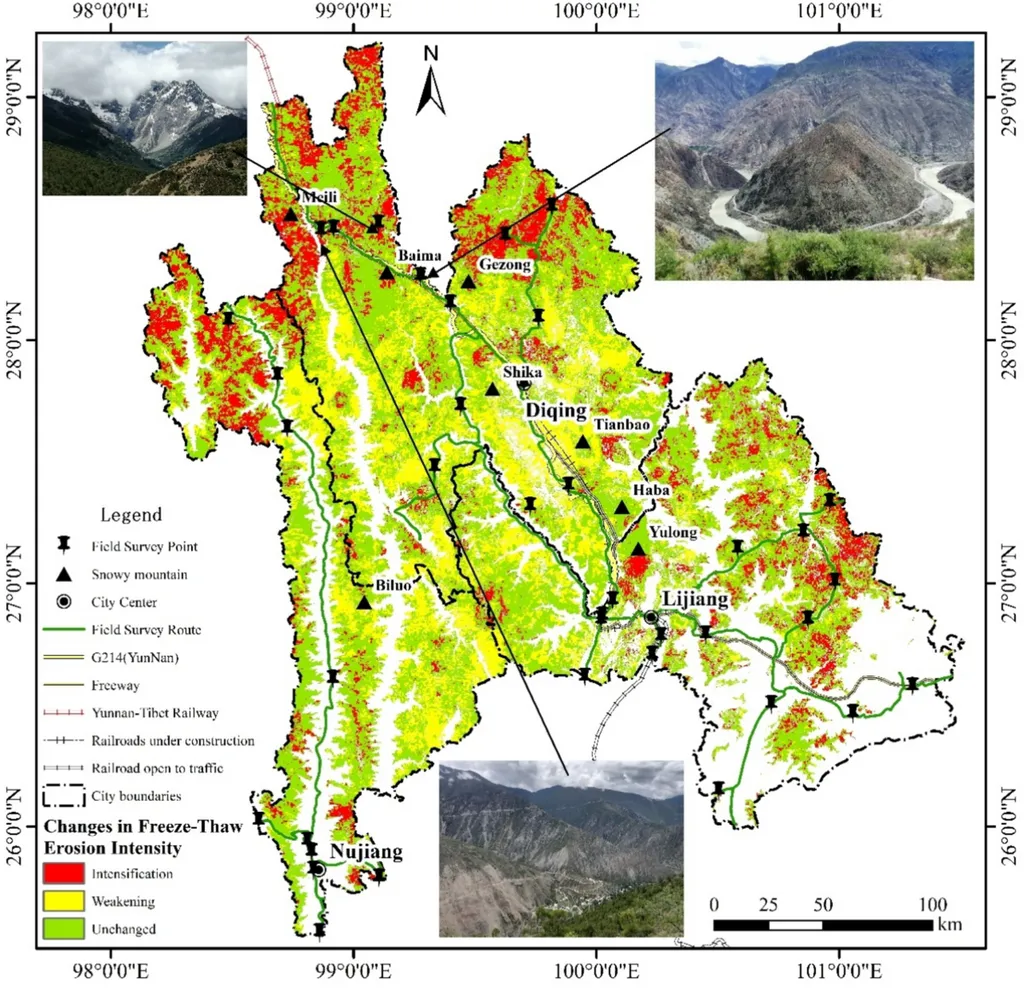In the heart of China’s agricultural landscapes, a pressing environmental concern is taking root, one that could reshape how farmers manage their fields in the face of global warming. A recent study published in *Eco-Environment & Health* sheds light on the intricate dance between freeze-thaw cycles (FTCs), biodegradable microplastics, and the degradation of the herbicide atrazine in Mollisols, a type of soil crucial for agriculture. The research, led by Yanjie Xie from the State Key Laboratory of Soil & Sustainable Agriculture at the Chinese Academy of Sciences, offers a nuanced look at how these factors interact, with implications that could ripple through the agritech sector.
As global temperatures rise, so does the frequency of freeze-thaw cycles in agricultural soils. These cycles, it turns out, significantly inhibit the microbial degradation of atrazine, a common herbicide. “Freeze-thaw cycles, rather than microplastics, were the primary culprits in slowing down the breakdown of atrazine,” Xie explains. The study found that FTCs reduced atrazine degradation by an average of 33.69%, while microplastics had a more modest impact, inhibiting degradation by just 4.99%.
The research also revealed that the thawing temperature played a pivotal role in shaping soil microbial communities and atrazine degradation. Biodegradable microplastics, specifically poly(butylene adipate-co-terephthalate) (PBAT), had varying effects depending on the FTC conditions. Interestingly, microplastics only showed a trend toward promoting atrazine degradation under high-frequency and high-thawing-temperature FTCs.
For the agriculture sector, these findings could be a game-changer. As farmers increasingly turn to biodegradable mulch films to reduce plastic waste, understanding how these materials interact with soil microbes and herbicides becomes crucial. “There’s no synergistic effect between microplastics and FTCs on atrazine degradation within a short-term period,” notes Xie. This means that while biodegradable microplastics may not exacerbate the issue, they also don’t mitigate the inhibitory effects of FTCs on atrazine breakdown.
The study also highlighted how microplastics alter microbial interactions and ecological niches in the soil. They affect specific bacterial abundance, module keystone species, microbial network complexity, and functional genes. This intricate web of interactions underscores the complexity of soil ecosystems and the need for careful consideration when introducing new materials into agricultural practices.
Looking ahead, this research could shape the development of new biodegradable materials and farming practices that are more resilient to climate change. As Yanjie Xie and colleagues continue to unravel these complexities, the agritech sector will be watching closely, ready to adapt and innovate in response to the evolving environmental landscape. The study, published in *Eco-Environment & Health*, offers a critical step forward in understanding the ecological effects of biodegradable mulch film-derived microplastics in soil under FTCs, providing a foundation for future advancements in sustainable agriculture.

